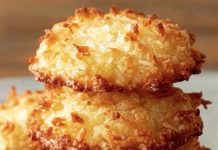Bananas are a delicious and nutritious fruit enjoyed by millions worldwide. However, most people don’t realize that the peel of this fruit is just as valuable as the flesh. Banana peels are often discarded without a second thought, but doing so is a waste of a versatile and beneficial resource. These humble peels can provide numerous benefits for your skin, hair, plants, and even your household environment. In this article, we’ll explore the myriad uses of banana peels, including a little-known trick that can help keep your home insect-free. Before you toss your banana peel into the trash, consider these innovative ways to use them to your advantage.
The Nutritional Power of Banana Peels
Banana peels are a powerhouse of nutrients, including potassium, magnesium, and various vitamins. These elements are essential for maintaining healthy skin and hair, making banana peels a valuable addition to your beauty routine.
Skin Benefits
Banana peels are rich in antioxidants and have anti-inflammatory properties, making them a natural remedy for various skin conditions. Rubbing the inside of a banana peel on your skin can help soothe irritation, reduce acne, and even diminish the appearance of fine lines and wrinkles. The peel’s moisturizing properties can also keep your skin hydrated and glowing.
DIY Banana Peel Face Mask
Ingredients:
- 1 ripe banana peel
- 1 tablespoon honey
- 1 teaspoon lemon juice
Instructions:
- Blend the Peel: Cut the banana peel into small pieces and blend until smooth.
- Mix the Ingredients: In a bowl, combine the blended banana peel with honey and lemon juice.
- Apply to Face: Spread the mixture evenly on your face, avoiding the eyes.
- Relax: Let it sit for 15-20 minutes before rinsing with warm water.
Hair Benefits
For your hair, banana peels can work wonders as a natural conditioner. The vitamins and minerals in the peel help strengthen hair follicles, promote growth, and add a natural shine. To create a nourishing hair mask, simply blend banana peels with coconut oil or olive oil, apply it to your hair, and let it sit for 30 minutes before rinsing. This simple treatment can revitalize your hair and leave it feeling soft and silky.
DIY Banana Peel Hair Mask
Ingredients:
- 1 banana peel
- 2 tablespoons coconut oil
Instructions:
- Prepare the Mixture: Blend the banana peel with coconut oil until smooth.
- Apply to Hair: Massage the mixture into your hair from roots to tips.
- Leave It On: Cover your hair with a shower cap and let the mask sit for 30 minutes.
- Rinse Thoroughly: Wash out with your regular shampoo and enjoy the softness.
Banana Peels in the Garden
Gardeners have long recognized the benefits of banana peels as a natural fertilizer. Packed with potassium, phosphorous, and calcium, banana peels can enrich soil and promote healthy plant growth. By incorporating banana peels into your gardening routine, you can boost plant vitality and enjoy a more bountiful harvest.
How to Use Banana Peels as Fertilizer:
- Composting: Add banana peels to your compost pile to enrich the mixture with essential nutrients.
- Direct Burial: Bury banana peels near the roots of your plants to release nutrients directly into the soil.
- Banana Peel Tea: Soak banana peels in water for several days to create a nutrient-rich solution. Use this “tea” to water your plants and watch them thrive.
An Unexpected Use: Natural Insect Repellent
While the benefits of banana peels for beauty and gardening are well-known, their potential as a natural insect repellent is a hidden gem. Banana peels can help ward off unwanted pests, such as mosquitoes and flies, without resorting to harsh chemicals. This DIY solution is particularly useful during the warmer months when insects are most active.
DIY Banana Peel Insect Trap
Ingredients:
- 1 banana peel
- 400 milliliters of water
- 200 milliliters of apple cider vinegar or white wine vinegar
- 200 grams of sugar
- 1 plastic bottle (2-liter capacity)
Instructions:
- Prepare the Bottle: Cut the plastic bottle in half horizontally using scissors.
- Mix the Ingredients: In a bowl, combine water, vinegar, and sugar. Stir until the sugar dissolves completely.
- Assemble the Trap: Pour the mixture into the bottom half of the bottle. Place the banana peel inside, ensuring it’s submerged in the liquid.
- Position the Trap: Place the trap in areas where insects are a problem, such as near windows or outdoor seating. The sweet scent attracts pests, while the vinegar repels them.
- Maintain the Trap: Replace the mixture and peel every few days to ensure continued effectiveness.
Why Choose Natural Solutions?
Opting for natural pest control methods over chemical alternatives offers several benefits. First, natural solutions are environmentally friendly and safe for both humans and pets. Chemical repellents often contain harmful toxins that can negatively impact health and the environment. Additionally, natural methods are cost-effective, utilizing ingredients you likely already have at home. By embracing natural solutions, you contribute to a healthier environment and reduce your ecological footprint.
Conclusion :
Banana peels, often overlooked and discarded, are a treasure trove of benefits waiting to be unlocked. From enhancing your beauty routine to enriching your garden and providing a natural way to repel insects, banana peels offer a versatile and eco-friendly solution to everyday challenges. Instead of throwing them away, consider the potential uses and advantages they bring to your home and lifestyle.
By incorporating banana peels into your daily routine, you can enjoy a more sustainable and rewarding approach to self-care and household maintenance. So, the next time you reach for a banana, remember the hidden potential of its peel and make the most of this valuable resource. Try these methods today and discover the incredible benefits of banana peels for yourself.
Source of the picture : Barbara O’Neill Lectures










